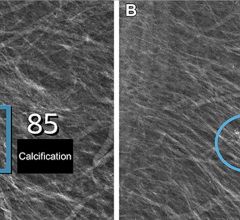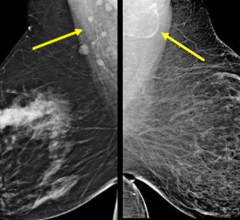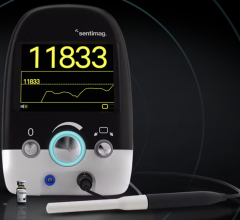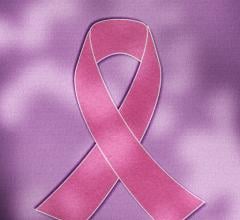
KRMC's radiologists can be more confident when reading 3-D exams, noted Dr. Christian Johansen. He explains, \"Tomosynthesis produces exceptionally clear 3-dimensional images of the breast, helping the Imaging Center's radiologists 'see through' overlapping tissues that might otherwise have obscured breast cancer.\"
In the small rural town of Kingman, AZ — approximately 90 minutes southeast of Las Vegas — most of its 28,000-plus population are economically disadvantaged; some of them still work in local gold and silver mines. So for women living in the area, getting a mammogram every year isn’t a priority; in fact, notes Dr. Christopher Johansen, Kingman Regional Medical Center (KRMC) Radiologist and Director of its Breast Imaging Program, “Many of our residents don’t have health insurance. And many aren’t even aware of the importance of getting annual mammograms.”
That’s why Teri Williams, Communications Director at KRMC, made it her mission to build a breast health practice for the Center. As part of this, she set up Well Women Health Check, a federally funded program to provide clinical breast exams, Pap tests and mammograms for under-insured and uninsured women throughout the region. She wrote and received grants from the Susan G. Komen Foundation to help fund a program called Catch It Early.
Then in September 2011, something happened that would change Teri’s life, along with the lives of hundreds of women in the area. KRMC purchased a Hologic Selenia Dimensions breast tomosynthesis (3D mammography) system, making them just the second hospital in Arizona to make the technology available to its patients.
Despite its size, it’s not surprising that 3D mammography made its way to Kingman. In addition to his extensive training in radiology at Mayo Clinic in Rochester, Minnesota, Dr. Johansen completed a one-year fellowship in breast imaging at Massachusetts General Hospital, where breast tomosynthesis was first pioneered.
Dr. Johansen explains the reason he pushed KRMC to purchase the technology: “The medical center is a non-profit community hospital; our first priority is to provide for the health of our town and county. In our community we’re seeing a one percent breast cancer rate, which is much higher than the national average. So we felt that tomosynthesis would have the greatest impact on our community’s health.”
Just ask Teri. Her mom is a breast cancer survivor, so Teri knows how important screening exams are. Her mammograms were always read as normal — until her tomosynthesis exam. Says Teri, “I have dense breast tissue, so there was no way 2D mammography could have found my cancer; it was tiny and hidden in layers of tissue.”
Fortunately for Teri, the tumor was still small and had not spread, so her treatment consisted of a lumpectomy. Says Teri: “Thanks to tomosynthesis, we caught the cancer early; no cancer cells were detected in my lymph nodes or in the tissue margins around the tumor. It’s crazy; I live and breathe tomosynthesis for everyone else, and then it saved my life.”
Teri is just one of many patients who are grateful to have tomosynthesis in the community. As Dr. Johansen notes, “We have had other cases with very vague findings on the patient’s 2D mammogram. In the past, we’ve relied on more expensive technologies like MRI to get definitive information. But now, we can use tomosynthesis for diagnostic exams. We have actually found more cancers — tumors that would have been difficult or impossible to see with 2D mammography.” Dr. Johansen also notes that KRMC’s radiologists have seen fewer call-backs since implementing 3D mammography.
Thanks to the continued efforts of Teri and the entire Imaging Center staff at KRMC, word is out that Kingman offers tomosynthesis. “We’re getting a lot of folks coming from other communities,” says Teri, who adds: “Women are naturally frightened when they hear the words breast cancer. But once they get through it — like I have — they understand how curable breast cancer is when it’s found early. That’s the real value of tomosynthesis. It truly is a lifesaver; it saved mine.”
In conclusion, Dr. Johansen says: “We basically went from a population of unscreened women to a population now being screened by the most advanced mammography technology available.”
Case study supplied by Hologic Inc.
The views and opinions expressed herein are those of Dr. Johansen, Teri Williams and their colleagues at Kingman Regional Medical Center and are not necessarily those of Hologic.
This information is intended for medical professionals in the U.S. and other markets and is not intended as a product solicitation or promotion where such activities are prohibited. Because Hologic materials are distributed through websites, eBroadcasts and trade shows, it is not always possible to control where such materials appear. For specific information on what products are available for sale in a particular country, please contact your local Hologic representative or write to womenshealth@hologic.com.
Hologic, Dimension and Selenia are trademarks and/or registered trademarks of Hologic and/or its subsidiaries in the U.S. and/or other countries.


 July 29, 2024
July 29, 2024 








